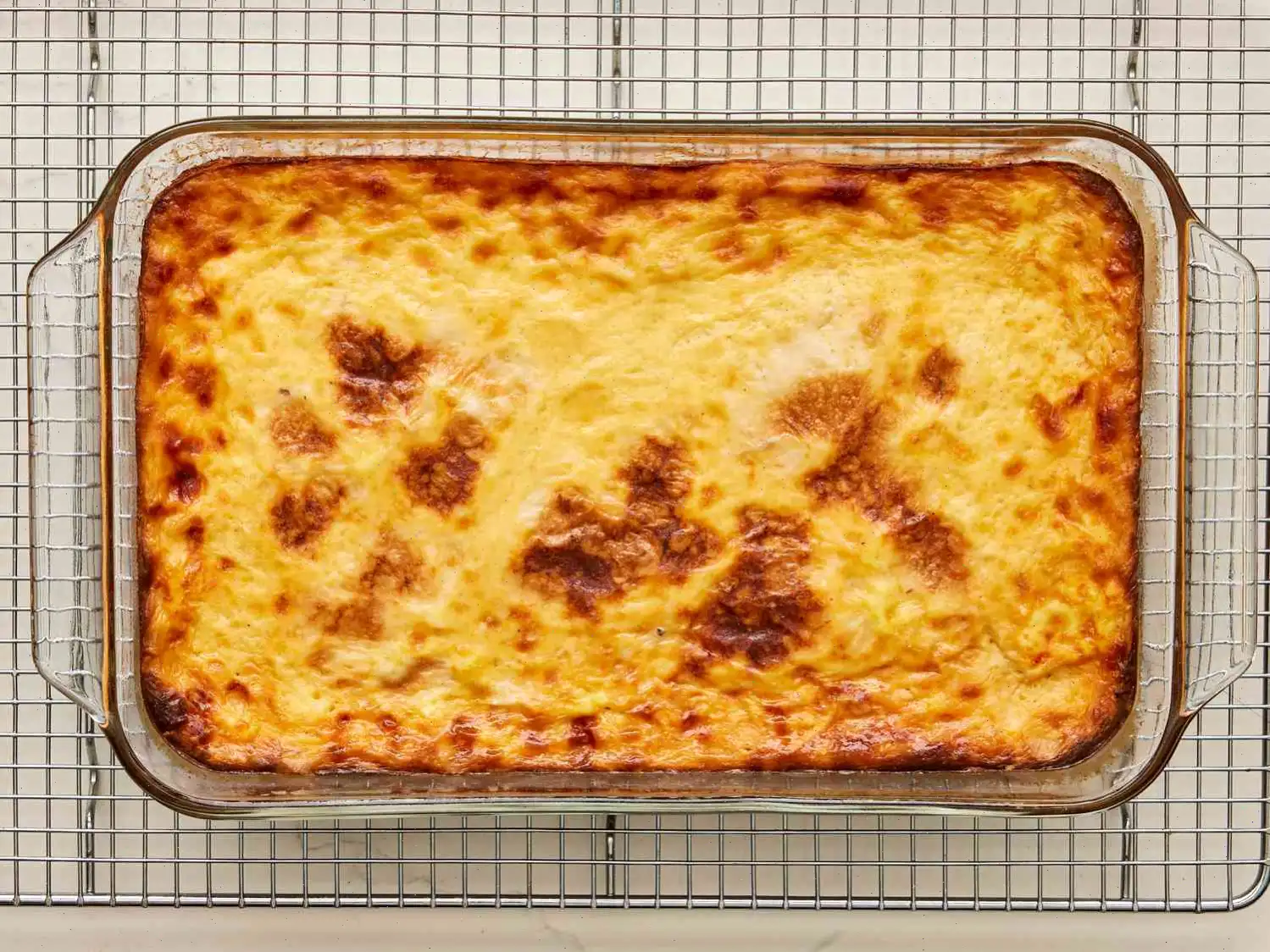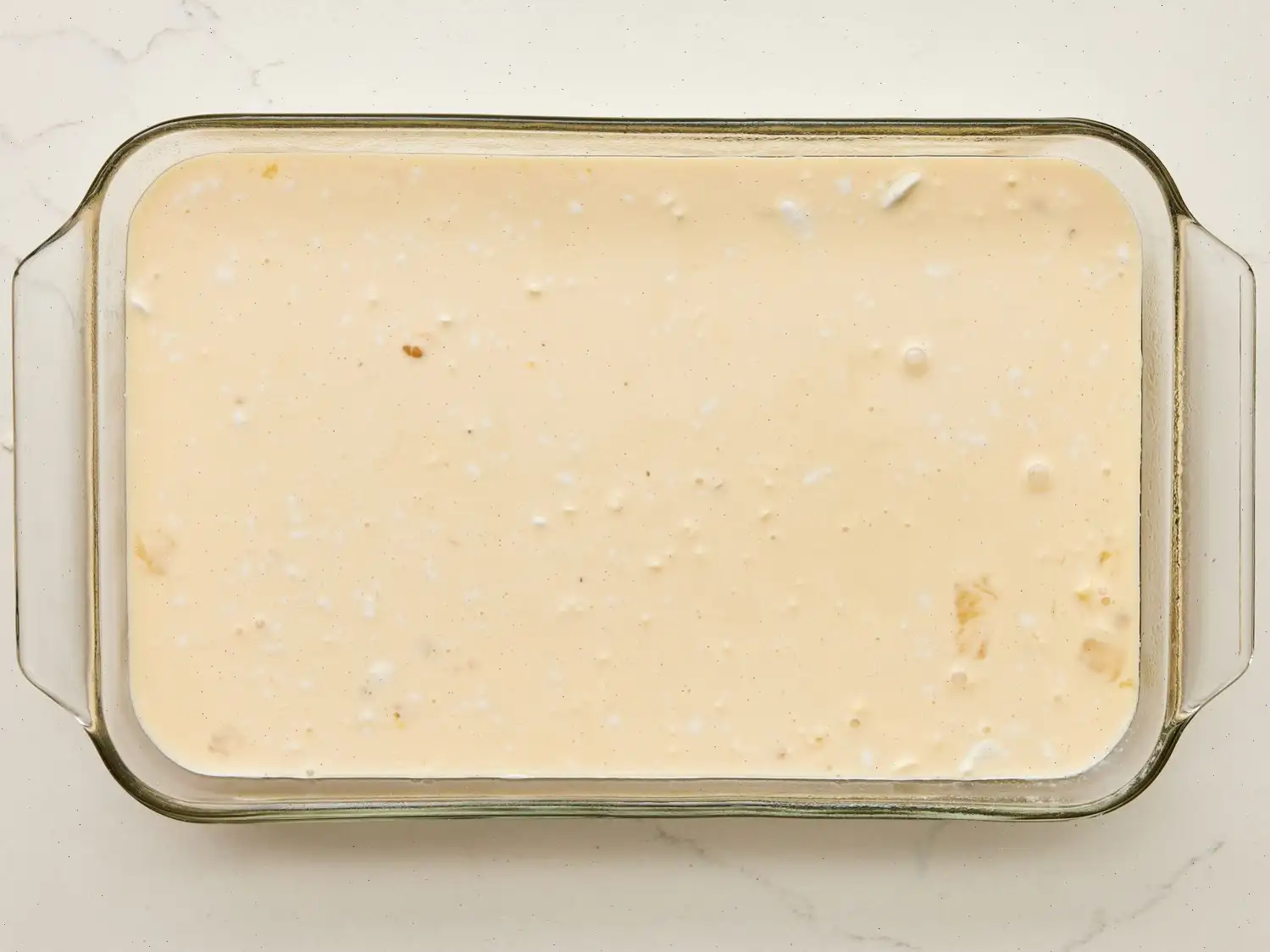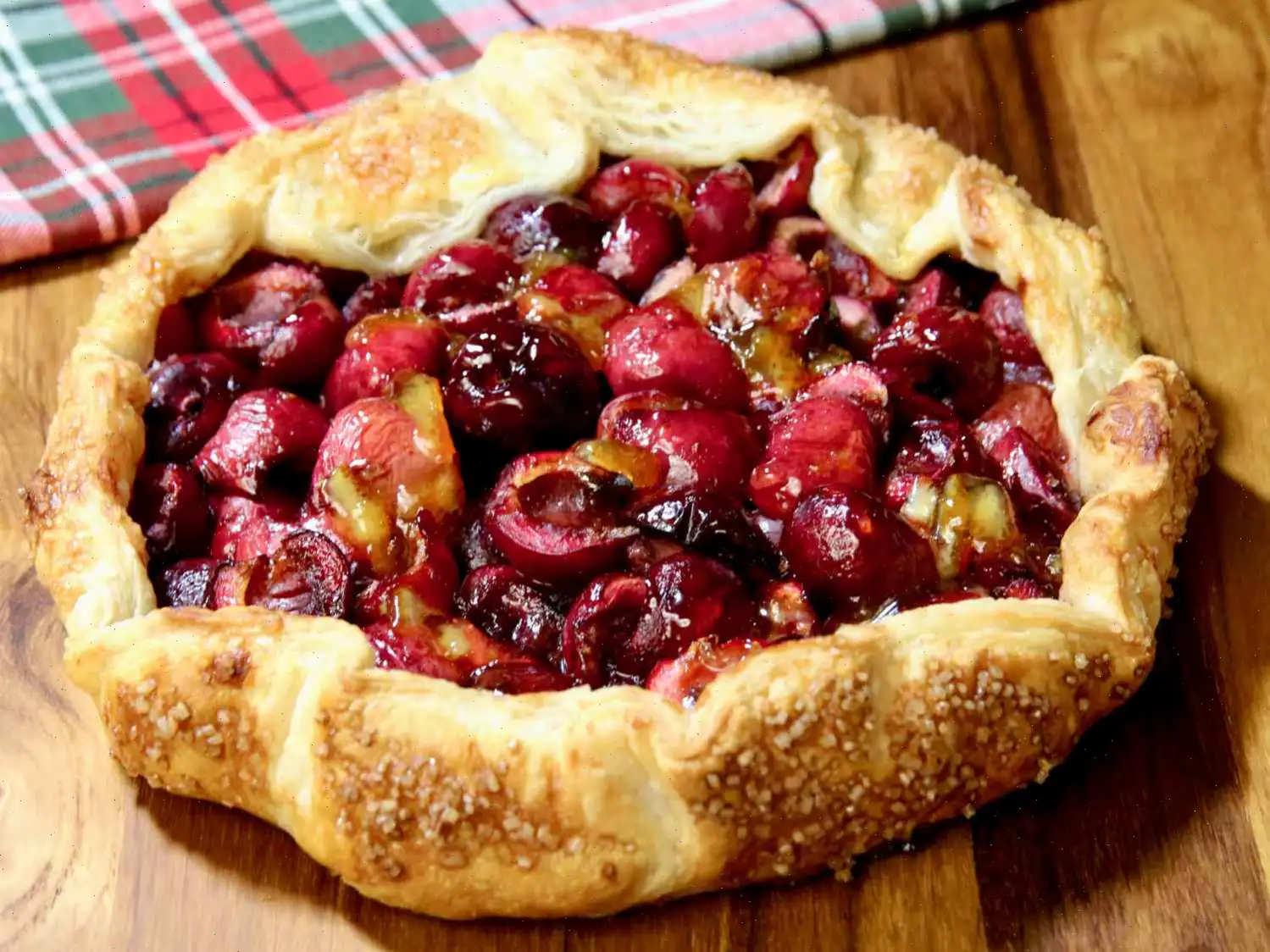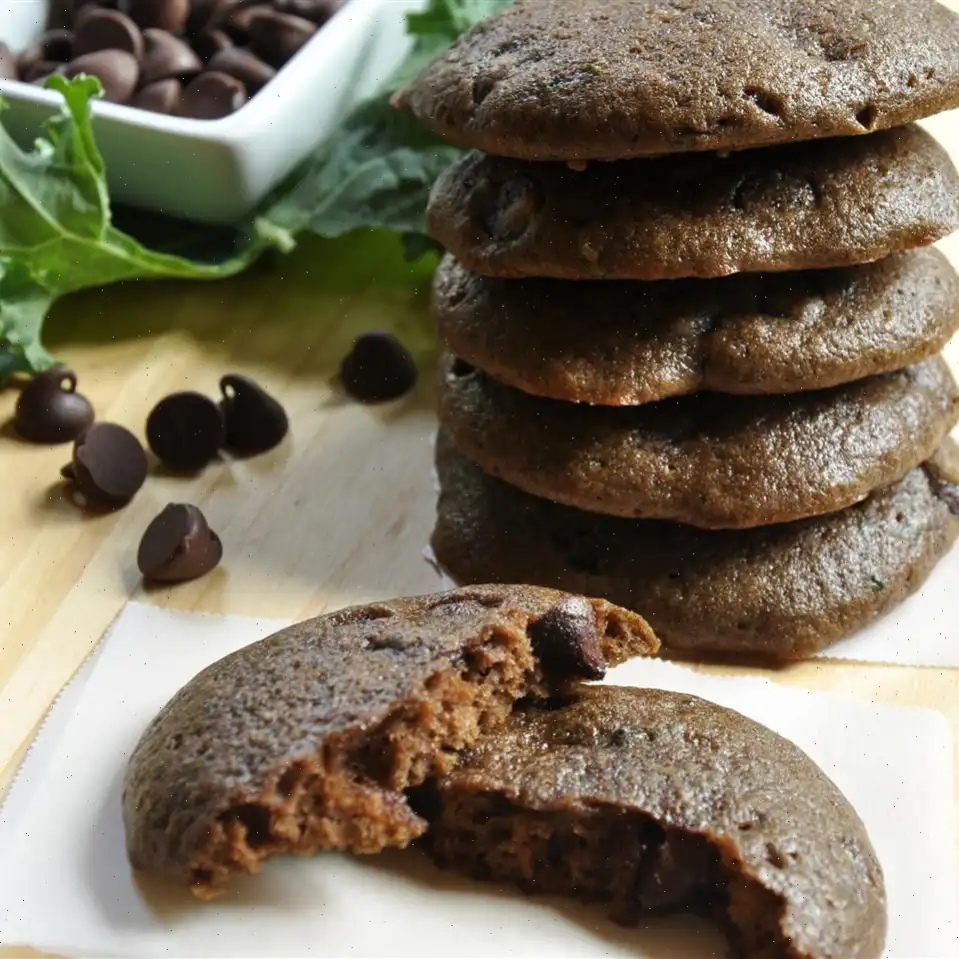
Cassava Cake Recipe
Ingredients
- 2 cups grated, peeled yuca
- 1 (14 ounce) can coconut milk
- 1 (14 ounce) can sweetened condensed milk
- 1 (12 ounce) can evaporated milk
- 2 large eggs, beaten
Directions
- Gather all ingredients.
- Preheat the oven to 350F (175C).
- In a large bowl, combine the grated yuca, coconut milk, condensed milk, evaporated milk, and beaten eggs. Stir until everything is well incorporated.
- Pour the mixture into a 2-quart baking dish, ensuring it is spread evenly.
- Bake in the preheated oven for approximately 1 hour, or until the dish is set and firm to the touch.
- Once the cake is set, turn on the broiler and bake for an additional 2-3 minutes, just until the top is browned and slightly crisp.
- Remove from the oven and allow the dish to cool completely. Refrigerate for about 1 hour before serving to allow it to fully set and chill.
Nutrition Facts (per serving)
| Nutrition | Amount |
|---|---|
| Calories | 329 |
| Total Fat | 16g |
| Saturated Fat | 12g |
| Cholesterol | 60mg |
| Sodium | 111mg |
| Total Carbohydrate | 42g |
| Dietary Fiber | 1g |
| Total Sugars | 26g |
| Protein | 8g |
| Vitamin C | 11mg |
| Calcium | 219mg |
| Iron | 2mg |
| Potassium | 460mg |

Cassava cake is a traditional Filipino dessert that has gained popularity not only in the Philippines but around the world. This simple yet rich treat is made from grated cassava (yuca), a root vegetable that is native to South America but widely cultivated in tropical regions. It's often prepared with coconut milk, sweetened condensed milk, eggs, and sometimes even coconut flakes for added texture. Known for its soft, custard-like consistency, it is a favorite during holidays, celebrations, and family gatherings.
Origin and History
The history of cassava cake is deeply intertwined with the history of cassava cultivation in the Philippines. Indigenous to South America, cassava was brought to the Philippines during the Spanish colonial era. Over time, the Filipinos adapted the root into a variety of dishes, including desserts. While cassava is used in savory dishes in some parts of the world, in the Philippines, it is most commonly used to make sweet treats like cassava cake. The dessert has been passed down through generations, and today, it remains a cherished part of Filipino cuisine, often served during festive occasions like Christmas and New Years.
Regional Variations
In the Philippines, cassava cake has regional variations, with some areas adding their own unique ingredients. For instance, in the Visayas region, some recipes incorporate macapuno, a sweetened coconut preserve, into the cake mixture or as a topping. In contrast, in Manila, the cake might feature a more straightforward combination of cassava, coconut milk, and eggs. The cake is often served in a square or rectangular shape, and the topping may include cheese or toasted coconut flakes for an added layer of flavor and texture. Depending on the region, the baking time and consistency can also vary, with some regions preferring a denser, firmer texture, while others enjoy a fluffier, softer version.
Differences from Similar Desserts
While cassava cake shares similarities with other baked coconut desserts, it stands out due to its unique use of cassava root, which gives it a chewy, pudding-like consistency. Unlike cakes made from flour, cassava cake has a denser texture, almost like a custard or flan. It also differs from other popular coconut-based desserts like bibingka (rice cake) or leche flan (caramel custard) by its distinct flavor profilesweet but not overwhelmingly so, with the natural nuttiness of the cassava and coconut milk providing a perfect balance. Additionally, cassava cake is typically baked at a low temperature for a longer time, allowing it to set into a firm yet moist cake.
Where Its Typically Served
Cassava cake is a staple at Filipino gatherings, from casual family get-togethers to formal celebrations such as weddings, birthdays, and religious holidays. In the Philippines, it is commonly served as a dessert after a hearty meal or as a snack with a cup of hot coffee or tea. Outside of the Philippines, cassava cake has found its way to Filipino communities around the world, from the United States to Canada, and even Australia. Its often sold in Filipino bakeries, where it is made fresh or packaged for takeout. In some places, it may even be served in Filipino restaurants, giving non-Filipino diners a taste of this unique dessert.
Interesting Facts
- Cassava is rich in carbohydrates, making it an essential staple food in many tropical countries. While it is most commonly used as a savory dish in some cultures, the Philippines has mastered its use in sweet delicacies.
- The addition of macapuno stringssweetened coconut preservesadds a unique texture and flavor to cassava cake. Macapuno is often regarded as a delicacy and is a popular topping for many Filipino desserts.
- In some variations, cassava cake is topped with cheese, giving it a savory-sweet contrast that makes the dessert even more indulgent.
- Though cassava cake is traditionally baked, it can also be steamed in some variations, depending on regional preferences or family traditions.
- There is a version of cassava cake in which it is baked with a layer of condensed milk and coconut milk poured on top, creating a caramelized effect that adds richness to the dish.
You can listen to this recipe in AI audio format. Simply click the play button below to listen to the content in a format that suits you best. It’s a great way to absorb information on the go!
FAQ about Cassava Cake Recipe
Comments
Brandon Scott
01/19/2023 05:18:26 AM
I'm always tempted to purchase bakery items from the Asian grocery store, but I hesitate due to concerns about their freshness and sanitation. I'm unsure of their age and how long they've been left at room temperature in the store, not to mention the unnecessary food colorings they may contain. This recipe has allowed me to enjoy homemade Asian desserts simply and safely. The resulting dish remains soft and chewy whether served warm or cold. I was able to acquire a 2lb. (32oz) bag of frozen yucca from a nearby Indian grocery store. After thawing, rinsing, and draining the yucca in a colander, I blended it with 12 oz of water (instead of evaporated milk) and coconut milk until smooth. If you have a smaller blender, you may need to work in batches. In a large bowl, I whisked together eggs, condensed milk, 1/4 cup of sugar, and 1/2 cup of unsweetened coconut flakes. I then combined this mixture with the blended yucca. I greased a 3-quart casserole dish with non-stick spray and baked the dessert for 1 hour and 10 minutes until the edges turned golden. I can't resist making this again and find myself indulging until I'm pleasantly full.
Kelly Walker
11/24/2023 07:55:42 AM
This recipe is fantastic and simple to follow. With a few modifications, it turned out to be just the right level of sweetness and had a perfect texture. I opted for a 28oz bag of cassava and a 12oz jar of macapuno (young coconut strings). I baked it for 1 hour and 15 minutes in a greased 13x9 glass rectangle pan, and broiled the top for the final 5 minutes before letting it cool overnight. The result was absolutely delicious! Thank you for sharing this wonderful recipe!
Emma Sanchez
08/13/2023 12:23:01 PM
I always appreciate the consistent quality of this cake and its creamy texture. I baked it for an hour and ten minutes, although the baking time can vary depending on how firm I want the cake to be. I really enjoy it, and sometimes I like to add coconut flakes for a unique twist.












